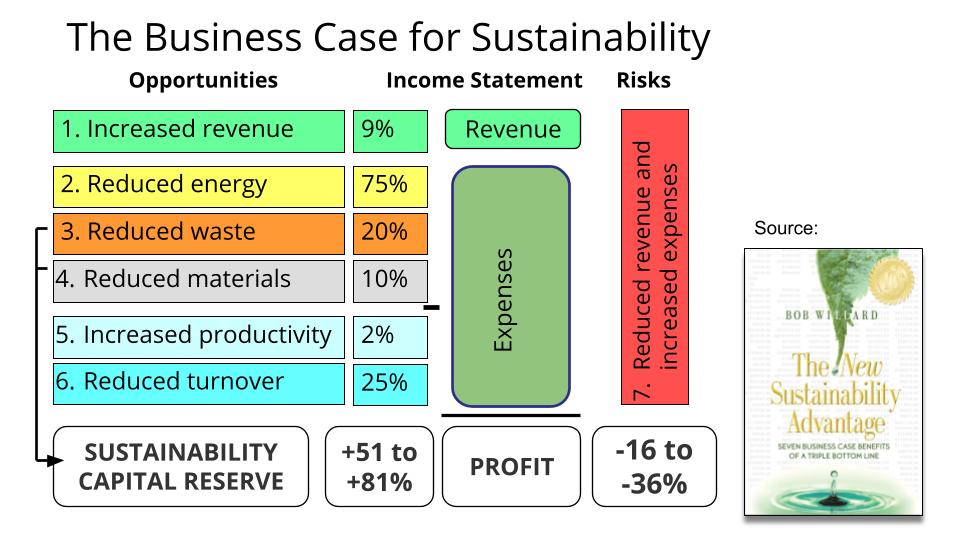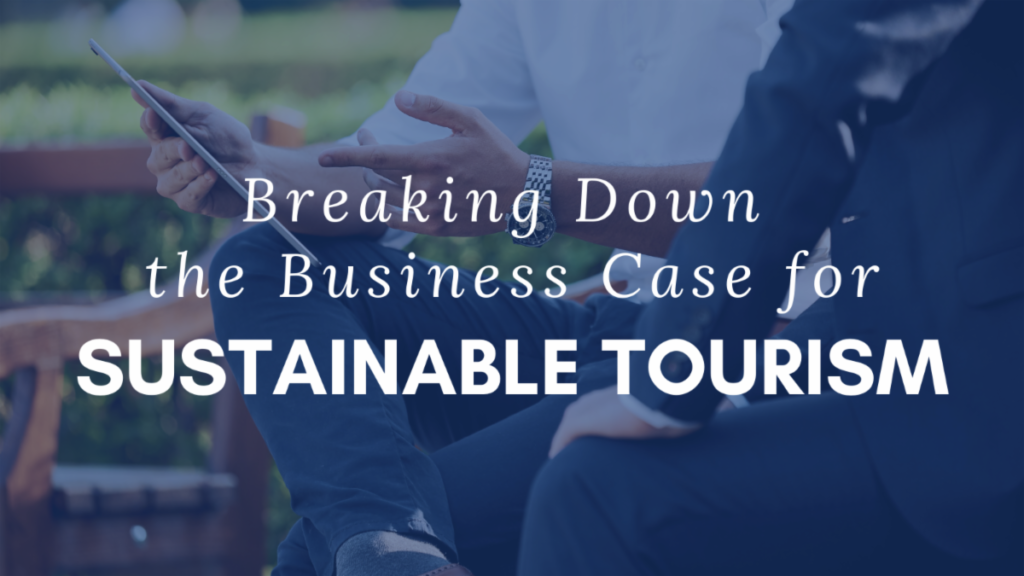By Angela Nagy, CEO, GreenStep Solutions
Businesses with a well-planned sustainability strategy can increase their profits by 51% to 81%. Yet, when the terms “sustainable tourism”, “going green”, or “responsible tourism” come up in the boardroom, there is often an assumption that taking action in these areas will just lead to another line item on the expense side of the budget. As a result, many organizations are missing out on significant opportunities to cut costs, increase revenue, and ultimately improve profitability.
Based on years of research and hands-on work with a wide range of businesses, Canadian author and speaker Bob Willard has identified that if a typical company were to use best-practice sustainability approaches, it could improve its profits by at least 51% within three to five years, while avoiding a potential 16% to 36% erosion of profits from doing nothing. Improving profits by over 50% sounds great on paper, but where do these numbers come from?
The Math: Increasing Revenue
First, let’s look at the top line of the profit equation – revenue. According to Willard’s research, most companies have the potential to increase revenue by an average of 9% as a result of implementing and communicating sustainability initiatives. In tourism, this increased revenue could come from the ability to attract more guests due to a more authentic and credible story around sustainability, at both the destination and business level.
Booking.com’s most recent 2021 Sustainable Travel Report of 30,000 respondents from 30 countries, as well as from 3,390 accommodation providers from across 20 countries, found that 83% of travellers believe sustainable travel is a vital issue. 75% think travel companies should offer more sustainable choices, and 73% would be more likely to choose an accommodation provider if it implemented sustainability practices. Yet, 49% of travelers believe there aren’t enough sustainable travel options available.
Increased revenue could also come from promoting the cultural and natural experiences in a destination or integrating these into new products and offerings that celebrate this natural and cultural heritage.
Cutting Expenses through Sustainability
The expenses side of the equation is where it gets really exciting, as this is where significant cost savings can be achieved, but it is also where businesses face the biggest risks if they don’t take action on sustainability.
Let’s start with energy. When strategically and methodically approached, bricks and mortar tourism businesses, such as hotels, can save up to 75% on energy costs, and tour operators could cut up to 100% of their fuel costs. This is more important than ever as both energy costs and carbon taxes are increasing, and will continue to do so over the coming years. This is typically achieved by undertaking an energy or fleet assessment, prioritizing projects based on their payback period and return on investment (ROI), developing a project budget and implementation plan, and continuously iterating through this process.
To support the costs of these projects, many utilities offer subsidized energy studies and rebates for commercial customers, the Canadian federal government has tax incentives for large renewable energy and conservation projects, provincial governments offer rebates for electric vehicles and other initiatives, and more financial institutions are offering lower rates for projects that lead to a reduced carbon footprint. Check out the Business Development Bank of Canada’s great article on “How to Get Financing for Your Green Retrofit Project” if your project will require outside financing. There is also GreenStep’s EcoFund program, that helps tourism businesses generate tens of thousands of dollars annually to invest in energy saving, carbon reduction projects.
The next areas for savings are reduced waste at an average 20% savings, and reduced materials and water consumption, at 10%. Conducting a waste audit is a great place to start, and GreenStep has put together these free, handy recycling toolkits for one of our clients that can help to guide businesses, festivals, and events through the process of conducting a waste audit and implementing or improving your waste management program.
To help in reducing materials consumption, consider creating a sustainable purchasing policy. A big issue for the tourism sector is single use plastics, and the United Nations Environment Program and recently published a new report, “Rethinking Single-Use Plastic Products in Travel and Tourism.”
Reducing water consumption is a relatively low-cost approach and typically includes retrofitting shower heads, faucet aerators, spray valves, and toilets to low flow models, and installing drip irrigation systems for landscaping and agricultural uses.
Labour is one area that is often overlooked as a financial benefit of implementing a sustainability strategy, yet it is an ongoing challenge for the tourism industry. Research shows that workplaces that engage employees in their sustainability initiatives experience increased employee productivity and innovation, reduced employee turnover, and a greater ability to attract and retain top talent. Willard’s research calculates that these benefits can save companies an average of 27% labour-related costs.
The Bottom Line
When the opportunities for increased revenue are combined with reducing expenses that result from implementing a strategic sustainability plan, Willard’s research demonstrates that businesses can improve their profits by 51% to 81%. At the same time, the risk of declining profits is avoided.
So what are you waiting for? It’s time to accelerate your sustainability journey. The links provided in this article can help you get started, and I’m always available for a free consultation to discuss how we might be able to help. You can also take the Sustainable Tourism 2030 Pledge to make a commitment to improving your sustainability performance between now and 2030, and we’ll provide you with tips, guidance and resources to help you on your way.


